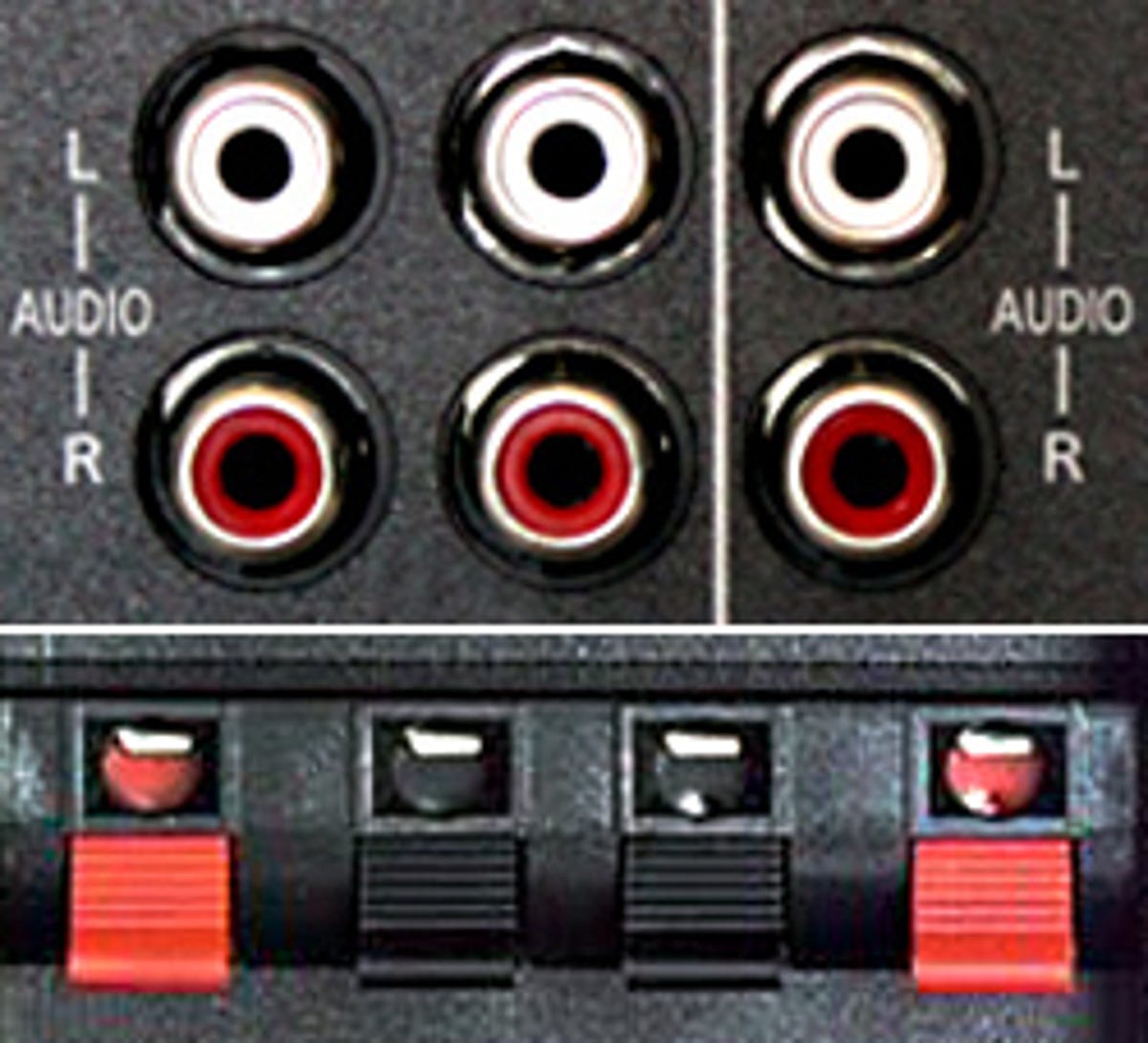CNET Reader Kato asks:
I have speakers directly hooked up to my TV via the “speaker audio out.” It works fine. I then hooked up additional speakers I had from a computer. Upon doing so the volume on the original speakers went way down and I get even less from the new speakers. What am I doing wrong?
Oh, so many things…

Geoffrey Morrison (top) PartsExpress.com (bottom)
First, a bit of explanation. Certain TVs (mostly older models) have speaker-level audio outs so you can hook up additional speakers. These shouldn’t be confused with the RCA (round) “line-level” audio outputs that nearly all modern TVs have (more on this later).
In theory, speaker-level outputs are a great idea. All TV speakers sound like crap. Adding better speakers can make the sound better, maybe make the dialog more intelligible, make soundtracks sound better, etc.
In theory.
The TV’s audio amplifier is only going to be a few watts, most often 5 to 10 watts per speaker. If the speaker is easy to drive, this amount of power will get you a listenable volume in most rooms. If you want to turn it up, to enjoy a big action movie, or drown out your noisy friends during the big game, there just isn’t going to be enough power.
Worse, with such low wattage, turning it up can result in distortion and clipping. Worst case, this could potentially damage your speakers.
Reader Kato has found, by hooking up an additional set of speakers, the limitations of the TV’s amplifier. It only has “x” to give, and now it’s giving x to twice as many speakers, which equals less volume (roughly 50 percent) for each set of speakers.
The standard analogy in this situation is a water hose. Only so much water can get through the hose at one time. You’re splitting the hose in two. Same amount of water in total, but split between two smaller hoses.
A few of TVs, such as those with built-in soundbars, have OK sound, so are exceptions to the “all TVs sound like crap” rule. That said, they’re still not going to sound as good as a TV connected to one of the options listed in the next section.
Related stories
- How to amplify the dialogue from your HDTV
- LED LCD vs. plasma vs. LCD
- Why all HDMI cables are the same
- Why all HDMI cables are the same, Part 2
- Is plasma HDTV burn-in a problem?
- Is LCD and LED LCD HDTV uniformity a problem?
The solution
In reality, the speaker outputs on non-soundbar-equipped TVs are a paltry substitute for real audio. They just don’t supply enough power to be really useful. There are better options.
If you already have the speakers, you can get a real AV receiver with HDMI switching for as low as $250. There are stereo-only models for even less. Nearly all modern televisions have line-level audio outputs, and most of these have optical or coax digital outputs as well. These, connected to a real amplifier or receiver, will power any set of speakers and give you much better TV sound.
Another, simpler route, is powered speakers. You take the same line-level output from the TV, and plug directly into the powered speakers. I’m a big fan of the AudioEngine A5s. Here’s a review of the new model, the 5+. Or check out the Emotiva airmotiv 4s which Steve Guttenberg loved.
I also recently put together a list of inexpensive Airplay-enabled audio systems that would double perfectly as TV sound enhancers, all for the price of a single AirPlay iPod dock.
A few hundred dollars is very little compared with the massive increase in sound quality you’ll get upgrading to real speakers. Don’t believe me? Check out the very first item in my Myths, Marketing, and Misdirection: Home audio edition article.
Got a question for Geoff? Click Geoffrey Morrison below, then click the E-mail link in the upper right to e-mail, wait for it…Geoffrey Morrison! Put “Morrison’s Mailbag” somewhere in there. If it’s witty, amusing, and/or a good question, you may just see it in a post just like this one. No, I won’t tell you what TV to buy. Yes, I’ll probably truncate and/or clean up your e-mail. You can also send me a message on Twitter: @TechWriterGeoff.




